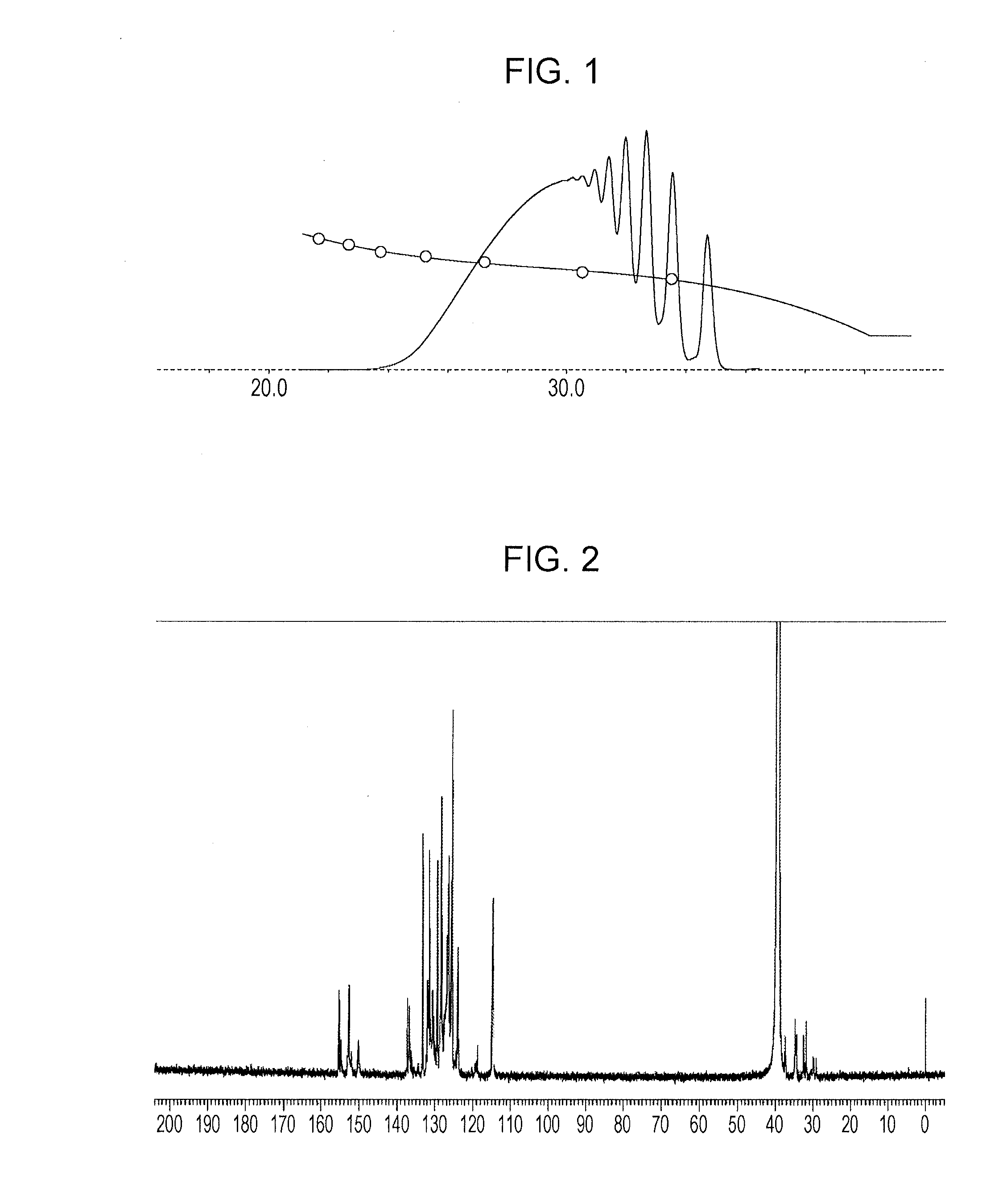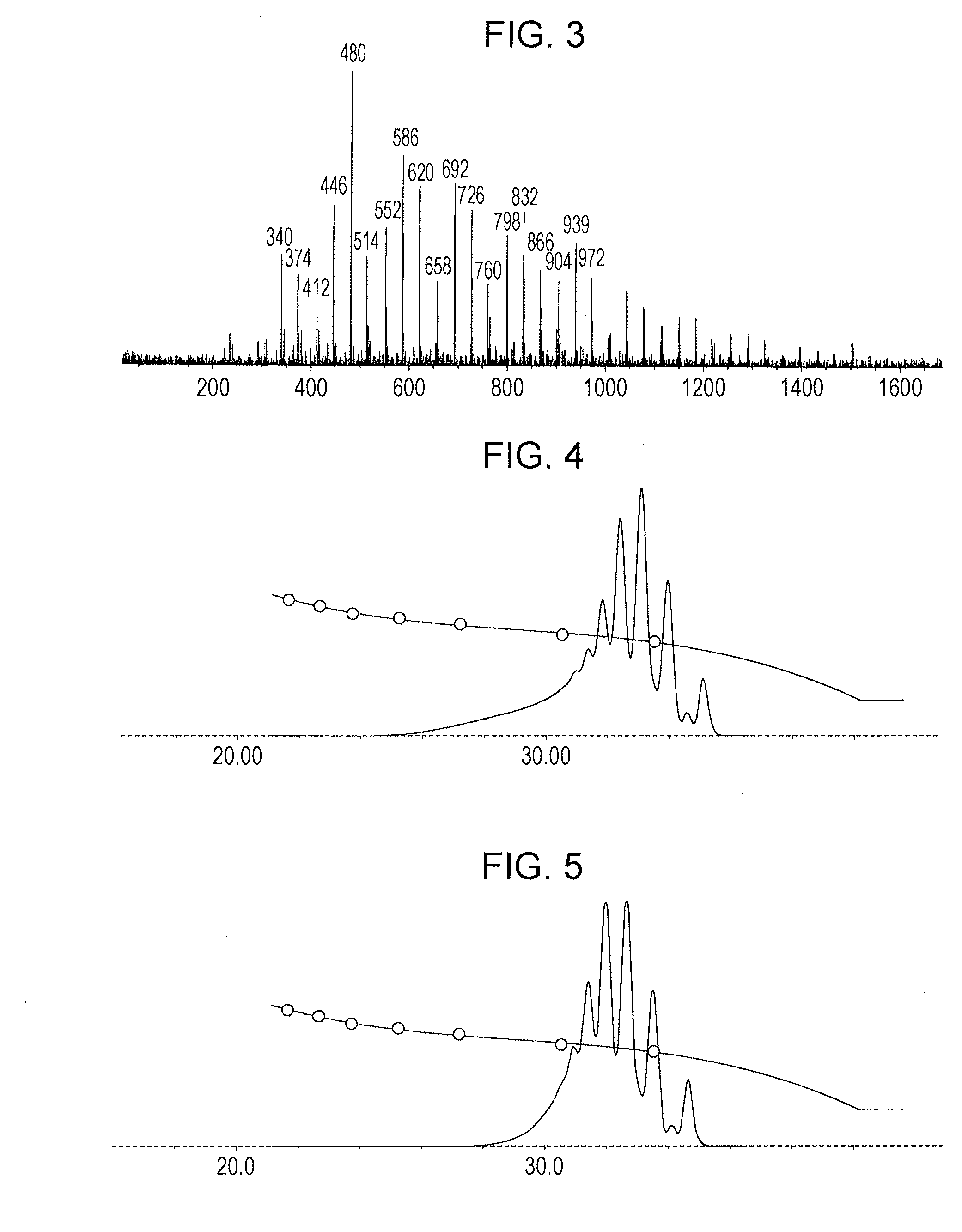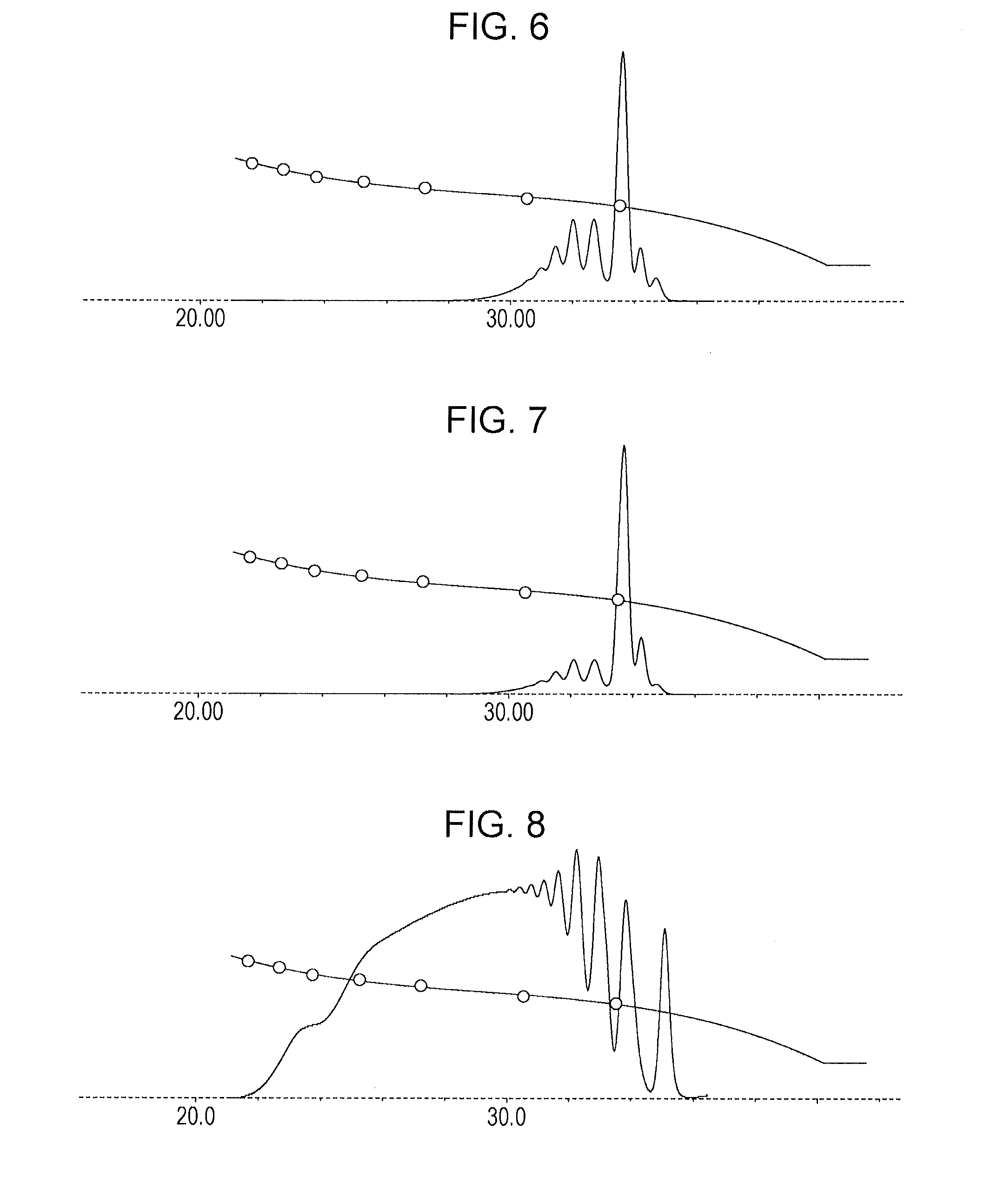Curable resin composition, cured product thereof, phenol resin, epoxy resin, and semiconductor encapsulating material
- Summary
- Abstract
- Description
- Claims
- Application Information
AI Technical Summary
Benefits of technology
Problems solved by technology
Method used
Image
Examples
example 1
Synthesis of Phenol Resin (A-1)
[0174]In a flask provided with a thermometer, a cooling tube, a fractionating column, a nitrogen gas inlet tube, and a stirrer, 103.0 g of phenol novolac resin (“M-70G” manufactured by Showa Highpolymer Co., Ltd., softening point 70° C., hydroxyl equivalent 103 g / eq) represented by a structural formula below and 103.0 g of methyl isobutyl ketone were charged under nitrogen gas purging and then heated to 115° C.
After heating, a mixture containing 88.8 g of methyl isobutyl ketone and 88.8 g (0.50 mol) of 1-chloromethylnaphthalene was added dropwise at 115° C. over 2 hours. After the completion of addition, reaction was performed at 120° C. for 1 hour and further at 150° C. for 3 hours to produce 161 g of phenol resin (A-1). The resultant phenol resin had a softening point of 105° C. (B & R method), a melt viscosity of 16.1 dPa·s (measurement method: ICI viscometer method, measurement temperature: 150° C.), and a hydroxyl equivalent of 173 g / eq.
[0175]FIG....
example 2
Synthesis of Phenol Resin (A-2)
[0176]In a flask provided with a thermometer, a cooling tube, a fractionating column, a nitrogen gas inlet tube, and a stirrer, 75.8 g (0.76 mol) of bisphenol F (“DIC-BPF” manufactured by DIC Corporation), 25.3 g (hydroxyl group: 0.24 equivalents) of phenol novolac resin (“TD-2131” manufactured by DIC Corporation, softening point: 80° C., hydroxyl equivalent: 104 g / eq), and 101.1 g of methyl isobutyl ketone were charged under nitrogen gas purging and then heated to 115° C. After heating, a mixture containing 99.6 g of methyl isobutyl ketone and 99.6 g (0.56 mol) of 1-chloromethyl naphthalene was added dropwise at 115° C. over 2 hours. The same subsequent operation as in Example 1 was performed to produce phenol resin (A-2). The resultant phenol resin had a softening point of 75° C. (B & R method), a melt viscosity of 0.7 dPa·s (measurement method: ICI viscometer method, measurement temperature: 150° C.), and a hydroxyl equivalent of 180 g / eq.
[0177]FIG....
example 3
Synthesis of Phenol Resin (A-3)
[0178]In a flask provided with a thermometer, a cooling tube, a fractionating column, a nitrogen gas inlet tube, and a stirrer, 100.0 g (1.00 mol) of bisphenol F (manufactured by DIC Corporation, purity 99%) and 100.0 g of methyl isobutyl ketone were charged under nitrogen gas purging and then heated to 115° C. After heating, a mixture containing 126.1 g of methyl isobutyl ketone and 126.1 g (0.71 mol) of 1-chloromethylnaphthalene was added dropwise at 115° C. over 2 hours. The same subsequent operation as in Example 1 was performed to produce phenol resin (A-3). The resultant phenol resin had a softening point of 72° C. (B & R method), a melt viscosity of 0.5 dPa·s (measurement method: ICI viscometer method, measurement temperature: 150° C.), and a hydroxyl equivalent of 200 g / eq. FIG. 5 shows a GPC chart of the phenol resin (A-3). In addition, the ratio of the total number of methylnaphthyl groups was 71 relative to the total number of 100 of phenoli...
PUM
| Property | Measurement | Unit |
|---|---|---|
| Temperature | aaaaa | aaaaa |
| Fraction | aaaaa | aaaaa |
| Percent by mass | aaaaa | aaaaa |
Abstract
Description
Claims
Application Information
 Login to View More
Login to View More - R&D
- Intellectual Property
- Life Sciences
- Materials
- Tech Scout
- Unparalleled Data Quality
- Higher Quality Content
- 60% Fewer Hallucinations
Browse by: Latest US Patents, China's latest patents, Technical Efficacy Thesaurus, Application Domain, Technology Topic, Popular Technical Reports.
© 2025 PatSnap. All rights reserved.Legal|Privacy policy|Modern Slavery Act Transparency Statement|Sitemap|About US| Contact US: help@patsnap.com



